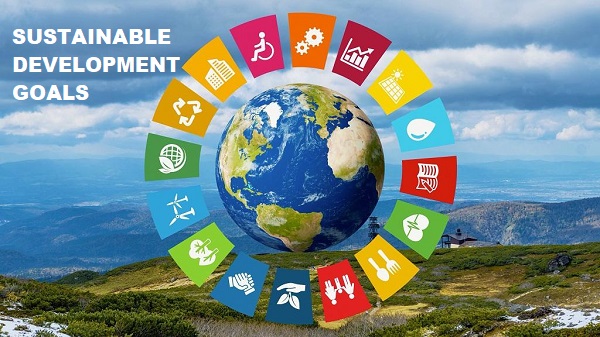Sustainable development has become a critical global priority as humanity faces unprecedented environmental, economic, and social challenges. The United Nations (UN) has responded to these challenges by establishing the Sustainable Development Goals (SDGs), a set of 17 interconnected goals designed to achieve a more sustainable, equitable, and prosperous world by 2030. Adopted in 2015, the SDGs are a comprehensive framework that addresses the root causes of poverty, inequality, and environmental degradation, aiming to leave no one behind.
The SDGs are a successor to the Millennium Development Goals (MDGs), expanding their scope and ambition. Here is a brief overview of each goal:
- No Poverty: End poverty in all its forms everywhere.
- Zero Hunger: End hunger, achieve food security and improved nutrition, and promote sustainable agriculture.
- Good Health and Well-being: Ensure healthy lives and promote well-being for all at all ages.
- Quality Education: Ensure inclusive and equitable quality education and promote lifelong learning opportunities for all.
- Gender Equality: Achieve gender equality and empower all women and girls.
- Clean Water and Sanitation: Ensure availability and sustainable management of water and sanitation for all.
- Affordable and Clean Energy: Ensure access to affordable, reliable, sustainable, and modern energy for all.
- Decent Work and Economic Growth: Promote sustained, inclusive, and sustainable economic growth, full and productive employment, and decent work for all.
- Industry, Innovation, and Infrastructure: Build resilient infrastructure, promote inclusive and sustainable industrialization, and foster innovation.
- Reduced Inequality: Reduce inequality within and among countries.
- Sustainable Cities and Communities: Make cities and human settlements inclusive, safe, resilient, and sustainable.
- Responsible Consumption and Production: Ensure sustainable consumption and production patterns.
- Climate Action: Take urgent action to combat climate change and its impacts.
- Life Below Water: Conserve and sustainably use the oceans, seas, and marine resources for sustainable development.
- Life on Land: Protect, restore, and promote the sustainable use of terrestrial ecosystems, manage forests sustainably, combat desertification, and halt and reverse land degradation and halt biodiversity loss.
- Peace, Justice, and Strong Institutions: Promote peaceful and inclusive societies for sustainable development, provide access to justice for all, and build effective, accountable, and inclusive institutions at all levels.
- Partnerships for the Goals: Strengthen the means of implementation and revitalize the Global Partnership for Sustainable Development.
The Importance of the SDGs
The SDGs provide a universal blueprint for a better future, recognizing that social, economic, and environmental issues are interconnected. Their importance lies in several key areas:
- Holistic Approach: The SDGs address a wide range of issues, ensuring that solutions are comprehensive and interconnected. For example, improving education (Goal 4) can lead to better economic opportunities (Goal 8) and reduced inequalities (Goal 10).
- Global Collaboration: The SDGs foster global partnerships and cooperation. Countries, organizations, and individuals are encouraged to work together towards shared goals, promoting a sense of collective responsibility.
- Inclusivity: The SDGs emphasize inclusivity, ensuring that no one is left behind. This focus on equity helps to address systemic inequalities and support vulnerable populations.
- Sustainability: By promoting sustainable practices, the SDGs aim to protect the planet for future generations. Goals like Climate Action (Goal 13) and Life Below Water (Goal 14) underscore the need for environmental stewardship.
- Measurable Targets: Each SDG includes specific targets and indicators, allowing for progress to be tracked and accountability maintained. This data-driven approach helps to ensure that efforts are effective and transparent.
Since their adoption, there has been significant progress towards the SDGs. For instance, extreme poverty rates have declined, and access to clean energy has improved. However, challenges remain. The COVID-19 pandemic has set back progress in many areas, exacerbating inequalities and straining health systems. Climate change continues to pose a severe threat, necessitating urgent and coordinated action.
Achieving the SDGs by 2030 requires sustained effort and innovative solutions. Governments, businesses, civil society, and individuals all have roles to play. Key actions include:
- Investing in Education and Health: Prioritizing education and healthcare can break the cycle of poverty and empower individuals to contribute to sustainable development.
- Promoting Gender Equality: Empowering women and girls is essential for achieving all the SDGs. Gender equality leads to more inclusive and effective decision-making.
- Fostering Innovation: Technological advancements and innovative practices can drive sustainable development. Supporting research and development is crucial.
- Enhancing Global Partnerships: Strengthening international cooperation and partnerships can mobilize resources and share knowledge, helping to achieve the SDGs more effectively.
The Sustainable Development Goals represent a bold and ambitious vision for a better future. By addressing the complex challenges facing our world today, the SDGs provide a roadmap for creating a sustainable, equitable, and prosperous world for all. Achieving these goals by 2030 will require dedication, collaboration, and innovation, but the rewards are immense: a world where people live in dignity, peace, and prosperity, in harmony with the planet.

